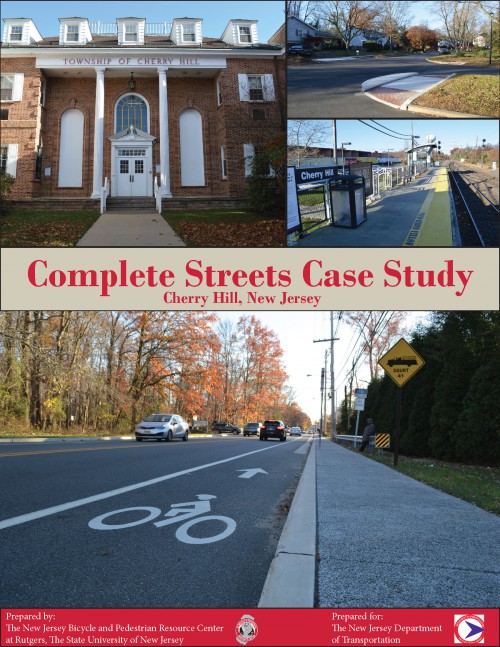In 2009, the New Jersey Department of Transportation adopted a Complete Streets policy which defined a Complete Street as one designed to provide safe access for all users by implementing a comprehensive integrated multi-modal network of transportation options. The benefits include increased safety for all users, connections between origins and destinations, and the promotion of healthier and more livable communities. Since the policy’s adoption, Complete Streets has built momentum throughout the state. As of December 2016, 8 counties and 135 municipalities have followed the lead and adopted their own local Complete Streets policy.
Cherry Hill was the 17th municipality in New Jersey to pass a Complete Streets policy (PDF) and did so in March of 2014. Since then, the township has worked closely with county, state and federal partners to implement upgrades to their suburban infrastructure. The Complete Streets policy in Cherry Hill allowed the municipality to systematically incorporate Complete Streets goals into each of their projects, which is ensured by the Technical Advisory Committee and Complete Streets Checklist. Traffic calming initiatives combined with installation of pedestrian and bicyclist infrastructure have been successful in making Cherry Hill’s streets safer and more accessible for all users.
The Bicycle and Pedestrian Resource Center, part of the Alan M. Voorhees Transportation Center at Rutgers University, has developed a series of case studies intended to highlight Complete Streets leaders in New Jersey. The purpose of this case study, funded by the New Jersey Department of Transportation, is to highlight Cherry Hill Township’s Complete Streets policy. The report is based on findings provided in interviews with Lorissa Luciani, Cherry Hill’s Deputy Director of Community Development and Planning and Jacklyn Bradley, Planner.
The report begins with a summary of key findings followed by background information on historical, demographic and land use data collected from county and Census documents. This information is essential in understanding the context of Complete Streets in Cherry Hill. The report then explores the history of the Cherry Hill Complete Streets policy, including how the policy was developed, promoted and implemented. Successes and challenges are then highlighted for the benefit of other communities looking to implement Complete Streets and a number of next steps provide readers with insight into the policy’s future. This report will serve as a valuable tool for engineers, planners, elected officials, and advocates who want to move forward with Complete Streets in their communities.
Read full report: Complete Streets Case Study: Cherry Hill, New Jersey (2016)

